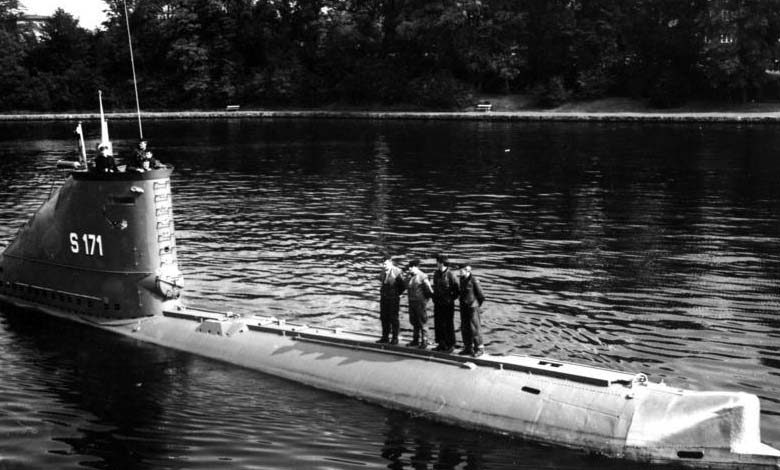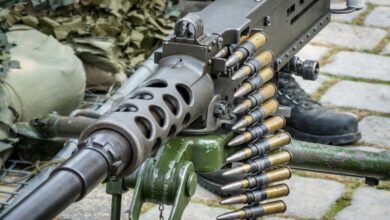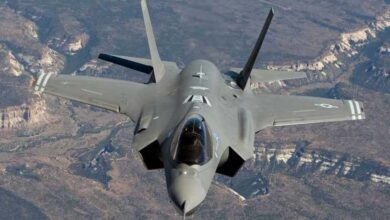U-Boats: Germany’s Terrifying Weapon That Changed the Course of War

Submarines played a central role in two world wars, with the German U-boats representing a significant threat to the Allies, particularly Britain.
Although submarines were not an entirely new weapon by 1914, their use as a new method of economic warfare was a revolutionary development, according to “History Online.”
-
How the Far Right is Exploiting Artificial Intelligence in Germany’s Elections
-
Germany… Is the End of the Muslim Brotherhood Near?
U-boats were the strongest naval arm of the German submarines, and just one month after the start of World War I, they dealt a heavy blow to the British Royal Navy when the U-21 submarine sank the British cruiser HMS Pathfinder, marking the first successful use of a self-propelled torpedo. Three weeks later, the U-9 submarine sank three British cruisers in less than an hour. At that point, the German leadership realized they had a powerful new weapon for naval warfare. On October 20, 1914, the U-17 submarine sank the first merchant ship.
Within three months, the nature of naval warfare changed entirely. The British Royal Navy became reluctant to expose its warships to this new threat, while the German Navy preferred to remain in its bases in Wilhelmshaven. The focus shifted to economic warfare, with Britain and France imposing a blockade on Germany, while German submarines sought to deprive Britain of vital imports.
-
Germany Prepares for a World War… “Protective Trenches” Linked to an Electronic “Fingerprint”
-
Report Warns: Muslim Brotherhood Maneuvers in Germany to Infiltrate Society and Expand Its Activities
How large was the first U-boat fleet?
At the start of the war, the German Navy had 29 submarines in service, some of which operated with small gasoline engines, along with 25 submarines under construction. However, these submarines proved to be deadly weapons, as demonstrated by the U-9. Later submarines, such as the U-21, were diesel-powered, which gave them a longer range and allowed them to carry more torpedoes. The fleet also included other types of submarines, such as coastal submarines and those used for laying mines. To assist in breaking the economic blockade, 11 long-range cargo submarines were built to transport supplies. By the end of the war, 375 submarines had been operated, of which 178 were lost, while most of the remaining submarines surrendered in British ports after the armistice.
-
The Terrorism Threat Remains High: Has the Number of Dangerous Islamists in Germany Decreased?
-
German Analyst Reveals: Our Country Fights All Terror Centers and Organizations Affiliated with Iran and the Muslim Brotherhood
How close did U-boats come to success?
This was a new war targeting civilians at sea and on land. The Germans started unrestricted submarine warfare against neutral ships, but they backed down in September 1915 for fear of angering the United States before resuming it in February 1917.
Targeting the enemy’s economy was not new, but using submarines to do so was unprecedented, especially after declaring the areas surrounding Britain and Ireland a war zone. By the end of 1917, German submarines had sunk 30 percent of the world’s merchant fleet.
The convoy system was introduced in September 1917, leading to a reduction in sinkings. As U.S. involvement in the war increased, German losses continued to rise, leading to the eventual failure of the campaign.
-
Cold War on the Horizon… Russia: European Capitals are Targets if Missiles are Deployed in Germany
-
“Serious Mistake”… Russia Threatens “Military Response” to “German Missiles”
U-boats under Nazi rule
Germany was prohibited from possessing submarines under the Treaty of Versailles in 1919. However, some submarines were secretly built abroad during the 1920s, and under the Anglo-German Naval Treaty of 1935, Germany began to openly develop its submarine fleet.
The backbone of the German submarine fleet was the Type VIIC submarine, with more than 700 built. Later types, such as Type IX and Type XXI, featured longer ranges, enabling them to stay in service longer. They were also capable of diving to greater depths, which increased their chances of evading detection and destruction.
With the increasing power of the Allied air forces, submarines were equipped with anti-aircraft weapons, such as the 3.7 cm gun or a 2 cm quadruple gun. Submarines were also fitted with radar detection equipment to detect enemy aircraft’s radar waves, giving them enough time to dive and avoid attack.
-
To achieve equality… Proposal for mandatory conscription of women in the German Army
-
Bill Before Parliament… Will Germany Ban the Muslim Brotherhood?
What was the elite weapon of the German Navy?
Under Admiral Karl Dönitz’s leadership, submarines were developed as an elite fighting force. Dönitz, a submarine commander in World War I, recognized how close this weapon came to defeating Britain. He believed that with the right tactics and a sufficient number of submarines, he could sink enough ships to force Britain to surrender.
By the outbreak of World War II, Germany had only 57 submarines, far fewer than the 300 submarines Dönitz considered necessary to sink a million tons of ships per month, which would lead to Britain’s defeat.
Dönitz developed new tactics, such as using “wolf packs,” where several submarines would work together and be directed by long-range reconnaissance planes from the German Luftwaffe. German submarines continued their relentless war, sinking Allied ships on the first and last day of the war in Europe.
-
Germany recalls Iranian ambassador to protest plot targeting Jews
-
Germany lifts the ban on selling fighter jets to Saudi Arabia
How close did U-boats come to success?
The result was similar to what happened in World War I. The German submarine fleet managed to sink vast amounts of merchant ships, with losses reaching 14.7 million tons in World War II, compared to 11.1 million tons in World War I.
However, by mid-1943, it became clear that the Allies were winning, due to American industrial and military superiority. As in World War I, U-boats fought with ferocity and courage, but in the end, they fought a losing battle.












